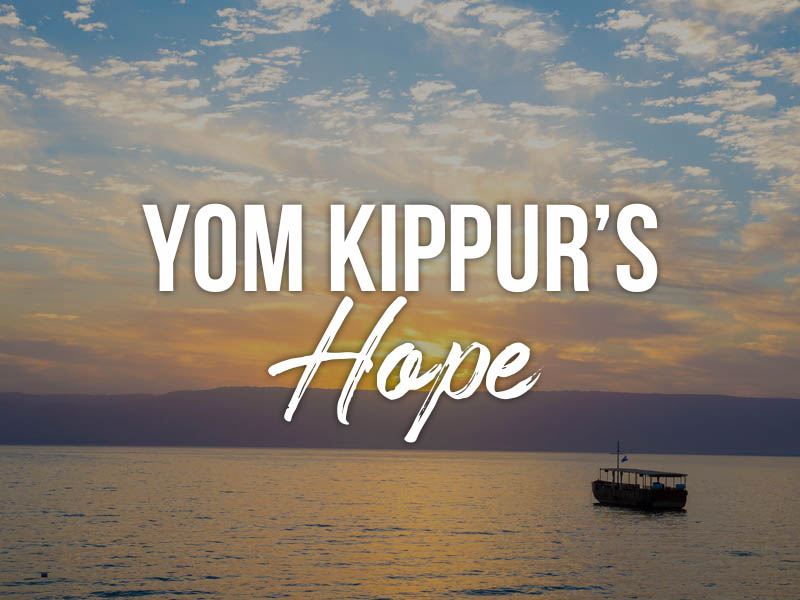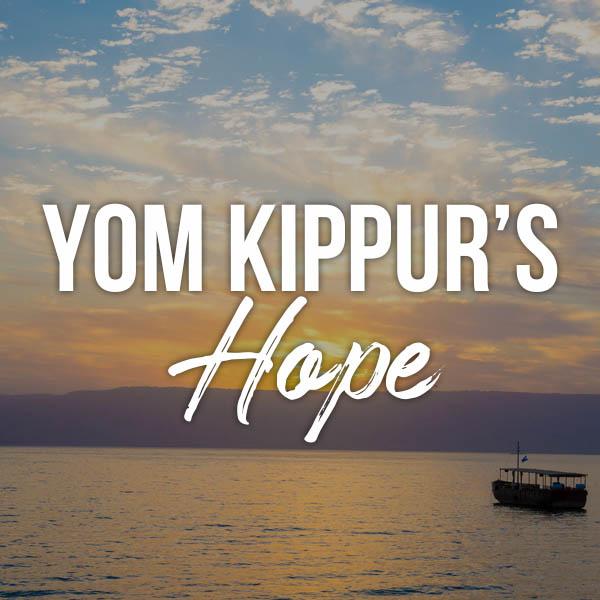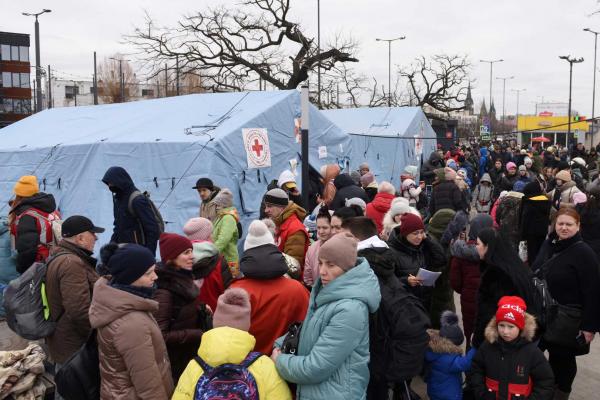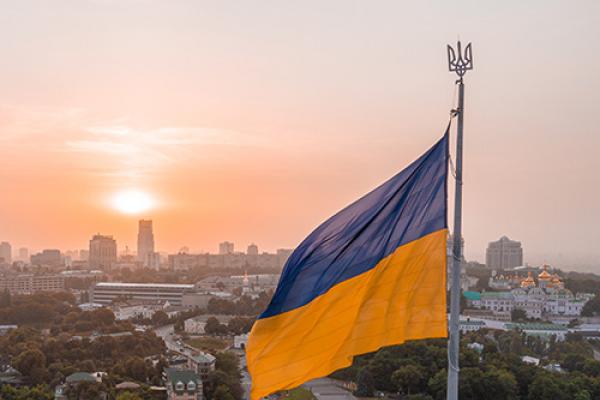
It’s not a day for saying, “Happy Holiday.” Yom Kippur – the Day of Atonement – is a serious and solemn day. It is the holiest day of the Jewish year, and its observance includes “afflicting oneself” with fasting. The customary greeting on Yom Kippur is “May you have an easy fast.”
It may sound heavy and somber, but on the holy day of Yom Kippur, one can also find hope.
In ancient Israel, Yom Kippur was the one day of the year on which the High Priest entered the Holy of Holies. This was the innermost area of the Temple separated by a thick curtain and housing the Ark of the Covenant. It was also the place where God’s presence dwelled.
The High Priest brought a smoking pan of incense into the Holy of Holies, and he sprinkled the blood of a bull and a goat onto the Mercy Seat of the Ark. Through the blood, he first made atonement for his own sins and then for all Israel’s. After this, Israel’s sins were symbolically placed on the head of a second goat, called the scapegoat, which was then led outside the camp and abandoned. It was a picture of purging Israel of her sins.
Today, according to the biblical commands, Jewish people attend synagogue services and do no work on Yom Kippur.* God ordained it as a day to afflict oneself, so we fast for 25 hours from food, water and certain pleasures and luxuries.
Rabbis teach that on Yom Kippur, God seals (makes final) the judgments that He made at Rosh Hashanah on individuals for the coming year. Yom Kippur ends an annual period of reflection in which, for 40 days, the focus of Jewish hearts is on repentance and seeking God’s favor for the year ahead. With no Temple, this spiritual work of the heart replaces the biblically ordained sacrifices of Yom Kippur.
The season begins with the Jewish month of Elul (in August and September on the Gregorian calendar) leading up to the High Holy Days of Rosh Hashanah and Yom Kippur. Charitable giving and mending relationships are heightened pursuits at this time of year.
The hope of Yom Kippur is found in the covering of sin and a restored relationship with God. King David, in Psalm 32, describes the weight of his unconfessed sin, saying that its heaviness drained him of strength. When he confessed to God, God forgave him and his burden was lifted.
“Then I acknowledged my sin to You and did not hide my iniquity. I said: ‘I confess my transgressions to Adonai,’ and You forgave the guilt of my sin.”
––Psalm 32:5
In Psalm 51, considered by many to be Psalm 32’s companion, David asks God to wash him, making him white as snow. He begs for a clean heart, restoration and forgiveness. “Then my tongue will sing for joy of Your righteousness,” he says. (Psalm 51:9, 12, 16).
Repentance and forgiveness usher in a renewed relationship with God. This is Yom Kippur’s hope.
As Messianic Jews, we recognize the fulfillment of hope given to us eternally through Messiah Yeshua (Jesus). Yeshua entered the heavenly Holy of Holies with His own blood, serving as both High Priest and sacrifice, to completely atone for our sin.
“We have this hope as an anchor of the soul, both firm and steady––a hope that enters the inner place behind the curtain.”
––Hebrews 6:19
We have been “set right by His grace” and possess “the confident hope of eternal life” through Yeshua our Savior (Titus 3:4–7). God has sealed our names in the Book of Life and given us the Holy Spirit as a pledge affirming this (Ephesians 1:13, 4:30). And when Yeshua died, the Temple curtain closing off the place where God’s presence dwelled ripped in two from top to bottom (Matthew 27:51).
Yom Kippur highlights the hope offered to all in Yeshua. For Messianic Jews, Yom Kippur is a solemn day to acknowledge the high cost of our sin and stand before God in humble gratitude for this gift and the provision of forgiveness, cleansing and eternal life through Messiah Yeshua.
This year, Yom Kippur begins at sunset on Tuesday, October 8 and ends at sundown Wednesday, October 9.
*See Leviticus chapter 16 and 23:26–32 and Numbers 29:7–11 for the biblical instructions for Yom Kippur.
Get the Fall Feasts Infographic
Discover the meaning and wonder of Rosh Hashanah, Yom Kippur, and Sukkot with this specially designed infographic.













